-
Wetlands capture more carbon than earlier thought
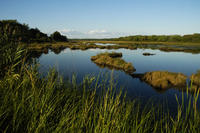
New study shows that wetlands in temperate regions are more valuable as carbon sinks than current policies imply; the study found that the stagnant wetland had an average carbon storage rate per year that is almost twice as high as the carbon storage rate of the flow-through wetland
-
-
Mysterious flotsam in Gulf came from Deepwater Horizon rig
Scientists track debris from damaged oil rigs, helping forecast coastal impacts in the future
-
-
Slowing down sea-level rise vs. reducing surface temperature change rate
Scientists say that reducing the amount of solar radiation hitting Earth (for example, by satellites that block the sun, making the Earth’s surface more reflective, or emulating the effects of volcanoes by placing aerosol particles in the upper atmosphere) would be a cheaper way to halt or reverse climate change than reducing carbon dioxide emissions
-
-
La Nina weather pattern may lead to flu pandemics?
Pandemics of influenza around the world caused widespread death and illness in 1918, 1957, 1968, and 2009; a new study examining weather patterns around the time of these pandemics found that each of them was preceded by La Niña conditions in the equatorial Pacific
-
-
Scientists study how nature cleans uranium from aquifer
A small town in Colorado was the site of uranium ore processing in the 1940s and 1950s, producing yellowcake; when the mills shut down, the mill tailings — a crushed rock byproduct of ore processing — were left behind on the north bank of the river; the tailings were hauled away in the 1990s, but a large amount of uranium that seeped out of the tailings remains as a contaminant in the aquifer and is slowly being released into the Colorado River
-
-
Depleted gas reservoirs used for carbon storage
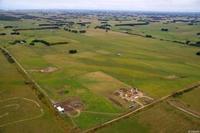
One way to keep CO2 from accumulating in the atmosphere is to bury (or “sequester”) it under ground; a demonstration project in Australia verified that depleted natural gas reservoirs can be used for geologic carbon sequestration; the carbon sequestration approach involves pumping CO2 deep underground for permanent storages
-
-
U.S. faces new wave of invasive species
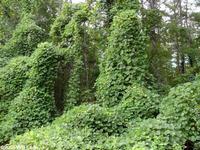
New study warns that the earlier onset of spring, warmer winters, economic globalization, and increased trade with emerging economies in Asia and Africa will see the United States face a significant new wave of invasive plant introductions; at least forty-two emerging U.S. trade partners – among them Thailand, Egypt, Saudi Arabia, Ecuador, Argentina, and several in equatorial Africa — are poised to export new nursery plant varieties to the United States
-
-
Texas drought – no end in sight
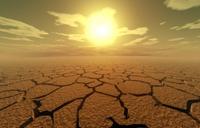
Residents across Texas are continuing to struggle with one of the state’s worst natural disasters in history; far from a singular event, Texas is experiencing a crippling drought with record low rainfall for the 2011
-
-
SF Bay wetlands losing battle against sea level rise
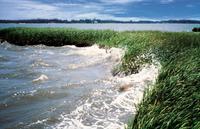
San Francisco Bay’s tidal marshes protect coastlines against flooding, provide nursery areas for commercial fisheries and filter pollutants from seawater and the atmosphere; these marshes may face a grave threat from sea level rise in the next century
-
-
Cleaning toxins from the oilsands
Oilsands development uses a vast amount of water and even though it’s recycled multiple times, the recycling concentrates the toxins and metals leftover from extracting and upgrading the bitumen, resulting in controversial tailings ponds that are a significant risk to the environment; scientists offer a way to make oilsands exploitation cleaner
-
-
Scrub carbon dioxide directly from the atmosphere too expensive
While it is possible chemically to scrub carbon dioxide from Earth’s atmosphere in order to lessen the severity of global warming, the process is prohibitively expensive for now; best to focus on controls for coal-burning power plants, say researchers
-
-
Study tracks safety of underground CO2 storage
An international team of geoscientists show that carbon dioxide can safely be stored underground in depleted natural gas fields; fhe experiment, in the Otway basin near Melbourne, Australia, is the most heavily monitored project for CO2 storage in the world
-
-
Shale gas development and healthy water sources
Geological formation known as the Marcellus Shale contains gas reservoir holding nearly 500 trillion cubic feet of technically recoverable gas; at current use rates, that volume could meet the U.S. demand for natural gas for more than twenty years; trouble is, extracting shale gas involves considerable pollution risks for water; Pennsylvania has more miles of stream per unit land area than any other state in the United States – and it is concerned about the quality of its water if more shale gas is extracted
-
-
Chicago emergency officials preparing for harsh winter
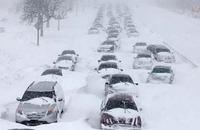
As Chicago braces for an especially brutal winter, the Cook County Department of Homeland Security and Emergency Management is doing its best to prepare residents, emergency responders, and work crews for the worst weather in the nation
-
-
Double whammy: dinosaurs killed by massive volcanoes, meteorite impacts

The mass extinction of the dinosaurs, which occurred at the end of the Cretaceous period sixty-five million years ago, was the result not of one catastrophic event (meteorite strike) but rather the result of a catastrophic one-two punch: colossal volcanic eruptions and meteorite strikes
-
- All
- Regional
- Water
- Biometrics
- Borders/Immig
- Business
- Cybersecurity
- Detection
- Disasters
- Government
- Infrastructure
- International
- Public health
- Public Safety
- Communication interoperabillity
- Emergency services
- Emergency medical services
- Fire
- First response
- IEDs
- Law Enforcement
- Law Enforcement Technology
- Military technology
- Nonlethal weapons
- Nuclear weapons
- Personal protection equipment
- Police
- Notification /alert systems
- Situational awareness
- Weapons systems
- Sci-Tech
- Sector Reports
- Surveillance
- Transportation
Advertising & Marketing: advertise@newswirepubs.com
Editorial: editor@newswirepubs.com
General: info@newswirepubs.com
2010-2011 © News Wire Publications, LLC News Wire Publications, LLC
220 Old Country Road | Suite 200 | Mineola | New York | 11501
Permissions and Policies
Editorial: editor@newswirepubs.com
General: info@newswirepubs.com
2010-2011 © News Wire Publications, LLC News Wire Publications, LLC
220 Old Country Road | Suite 200 | Mineola | New York | 11501
Permissions and Policies
